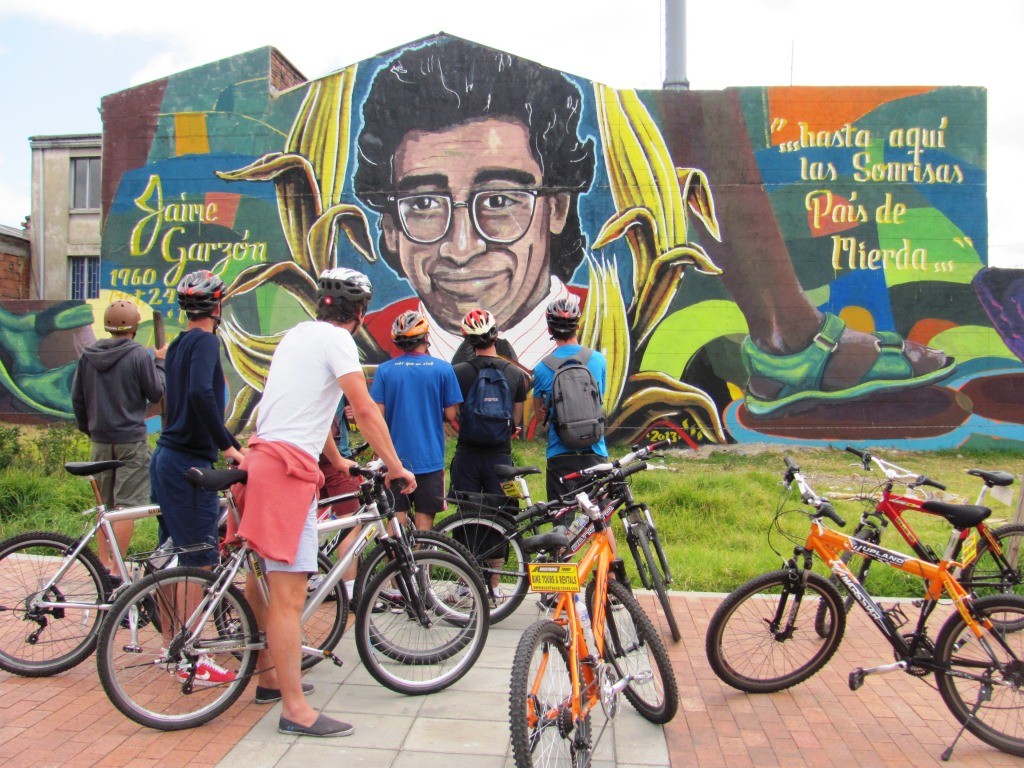Donald and I arrived at the end of Bogota’s rainy season and even though each day the skies were as to be expected, grey and over cast, we were lucky that when it rained, it chose to do so at night. Due to the altitude, the daytime temperatures were in the low 60’s and at night it dipped into the high 40’s. The few times the sun shone, it felt like early Spring but under the clouds, it mostly reminded us of late Fall. At an altitude of 8,000 feet, it takes a few days to become acclimated and we had to remind ourselves that if we were out of breath, it was not because we were out of shape but because of where we were.
Even though the city is laid out in an organized grid pattern with the north-south streets called carreras and the east-west streets called calles, the city is too spread out to be considered a walking city. It is divided into four zones and separated into twenty districts. Each district has its own mayor creating a sense of neighborhood with its own distinguishing characteristics. Our hotel, The Charleston, was located in the northern part of the city, Zone 1 or the Zona Rosa. This is the more affluent part of town where red brick apartment buildings with large picture windows line leafy streets that twist and turn as they climb up the slope of the mountain. Similar to Hong Kong, the better the view, the more expensive the rent. In the flat land, new shopping malls are filled with international designers and local designers have opened their own chic boutiques. As in old neighborhoods, the streets are narrow and trendy restaurants and clubs now occupy old buildings, converted with a sophisticated flair, or have moved into new buildings, modern and sleek. The area, with its sidewalk cafes, has a sense of cool and it is a “hip” place to be and to be seen. Due to the decrease in violence, it is relatively safe to walk there at night, but like in any large city, you need to use common sense and not find yourself the only one on the street late at night.
While the northern area is a magnet, attracting the fashionable, upscale Bogotenos, the opposite is true of the south side of the city. This section, part of which is a shanty town defined as the “belt of misery”, is the working class area and home to the internally dispossessed and displaced people fleeing the violence and deprivations of the countryside. At one time, the area was receiving up to 80,000 refugees per year, tasking the never adequate supply of goods and services. The high unemployment rate has sent the more entrepreneurial into the streets, turning motorists stopped at traffic lights into potential buyers for their wares and audiences willing to pay for their circus acts. From our experiences, our drivers willingly gave them money, examples of a high level of social consciousness derived from the last sixty years of political and economic disturbances that touched the lives of most everyone. These people did not find the streets of Bogota paved with gold but the socially conscious city government is making improvements with efforts to supply clean water, sewage and education. The mass transit bus system and the bicycle paths have enabled these people to get to work faster and it is estimated that 350,000 people bicycle to work each day.

